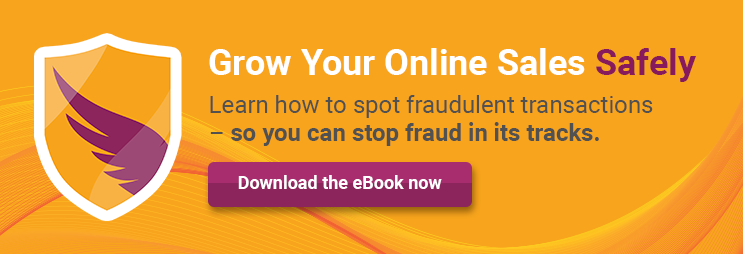Mobile Payment Fraud: The New Cost of Doing Business?
Is your business at risk for fraud by accepting mobile payments? Absolutely. Can you reduce that risk exposure? Absolutely—and the first step to mitigate that risk is to understand the unique threats posed by mobile payments.
Fraud keeps pace with mobile commerce growth
Mobile commerce is skyrocketing, and mobile fraud is growing right along with it—reaching an astonishing $32 billion in 2014, a 38% increase over 2013.
Consider these staggering statistics:
- In 2014, mobile commerce transactions made up 21% of the year’s fraudulent transactions(LexisNexis).
- Card-not-present fraud is expected to be nearly four times greater than point-of-sale (POS) fraud by 2018 (Javelin Strategy & Research).
- Revenue that mobile commerce merchants lost to fraud spiked 70% in 2014 (LexisNexis).
- 24% of fraudulent transactions are deemed “friendly fraud”—fraud perpetrated by a family member or close associate.
Mobile fraud can cover a range of circumstances, including:
- Fraudulent and/or unauthorized transactions
- Fraudulent requests for a refund/return
- Bounced payments
- Lost or stolen merchandise, as well as redistribution costs associated with redelivering purchased items (including carrier fraud)
One reason behind this growth in mobile fraud is that, with so many new technologies emerging in the mobile app space, the very newness of the technologies mean they often haven’t been fully vetted and may be more vulnerable to cyberthreats.
There’s also another big driver behind this growth in mobile fraud: chip card technology. Although the introduction of chip card technology has reduced in-store fraudulent transactions, it’s also leading to a spike in card-not-present scams. In France, once the dust had settled on their introduction of chip cards, online fraud had risen by 360%. Payment experts predict the United States can expect a similar increase.
Clearly, as tech-savvy fraudsters take advantage of mobile technology, retailers must be prepared to mitigate their risk when accepting mobile payments.
The cost of mobile fraud to merchants
Fraudulent mobile payments are responsible for 21% of all fraudulent transactions, even though they account for only 14% of all transactions processed. And unfortunately, these mobile fraud cases are more expensive than other types of fraud.
Every $1 of mobile fraud costs retailers $3.34—the highest LexisNexis Fraud Multiplier cost of any payment channel. Mobile fraud is slightly more costly than a fraudulent credit card swipe or mail order, and 27% more costly than a fraudulent transaction made from a computer.
These sobering statistics present a wake-up call for merchants, as well as a daunting challenge.
Mitigating risk while staying cutting-edge
It’s a fine line to walk: Retailers must keep current with technological demand but also be able to quickly successfully address security risks and privacy concerns to maintain and grow their customer base.
In the rush to develop mobile shopping apps and capture the mobile market, 15% of mobile commerce merchants say that a top challenge is addressing the lack of specialized solutions for online and mobile fraud. Even emerging technologies like the chip card hasn’t been the cure-all that merchants had hoped for—the card must be physically present during the transaction to take advantage of the security chip technology offers.
And once fraud is perpetrated, it’s difficult to investigate. Why? Most businesses aren’t taking advantage of available solutions that are capable of monitoring the unique identifiers associated with mobile devices, such as IP geolocation, real-time transaction-tracking tools, and customer profile databases.
Merchants must be proactive in their approach. Offering payment security, establishing customer identity verification procedures, and stopping mobile overlay malware apps that harvest a user’s credentials are just a few of the ways retailers can effectively fight mobile fraud.
Enhance security and combat online fraud
With such impressive growth, mobile commerce is often heralded as the future of retail. But retailers must guarantee a safe and secure mobile shopping experience in order to keep and protect their customers.
Whether big or small, if you accept mobile payments, your business is at risk. It’s therefore imperative that you make payment and data security top priorities. Identify your sales goals, target your vulnerabilities, and ensure your success, one click at a time. Clearsale is committed to helping you protect your company and maximize your revenue. Contact us today to make sure you have the right fraud protection plan in place to cover all of your sales!
 Sarah Elizabeth
Sarah Elizabeth
